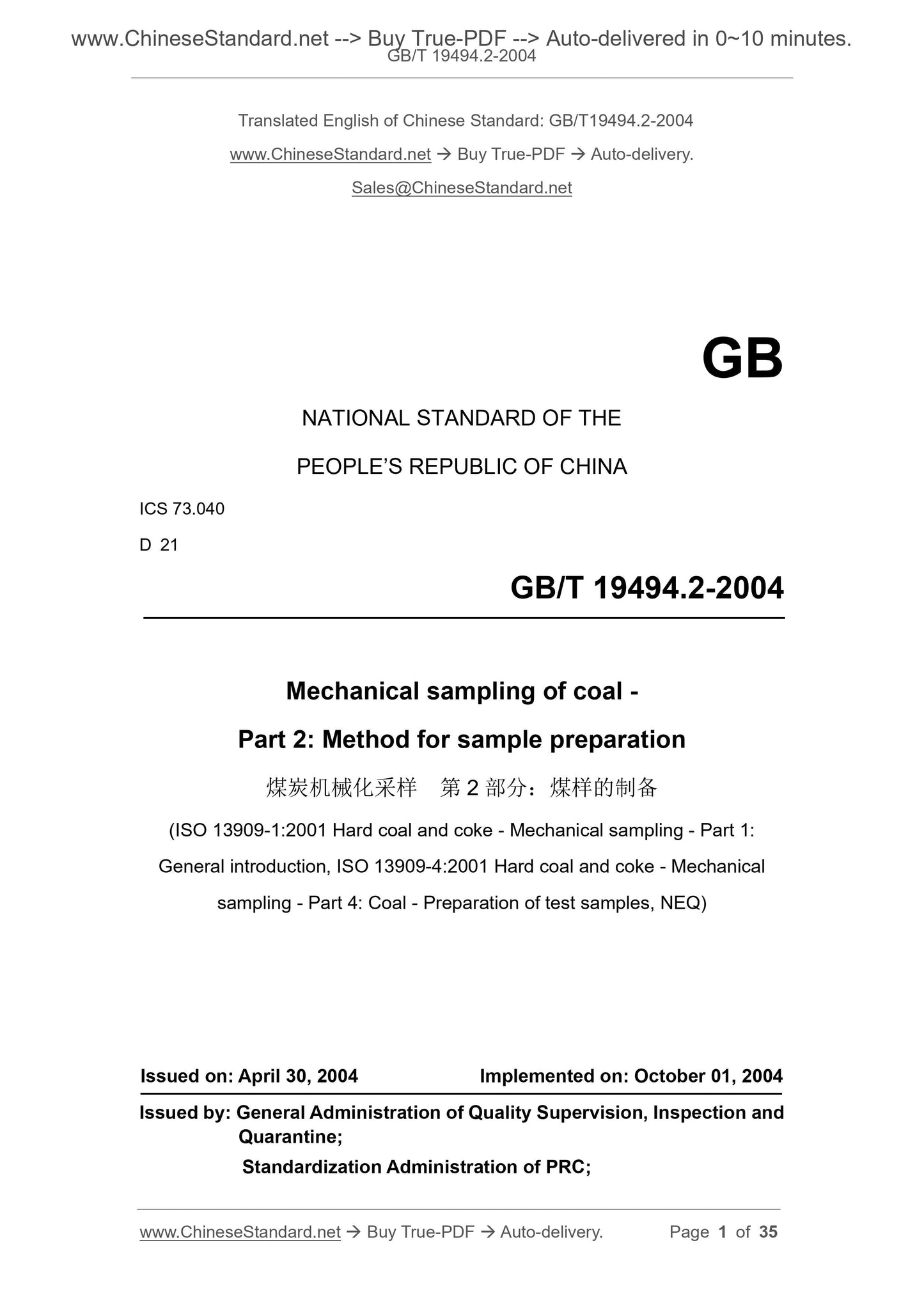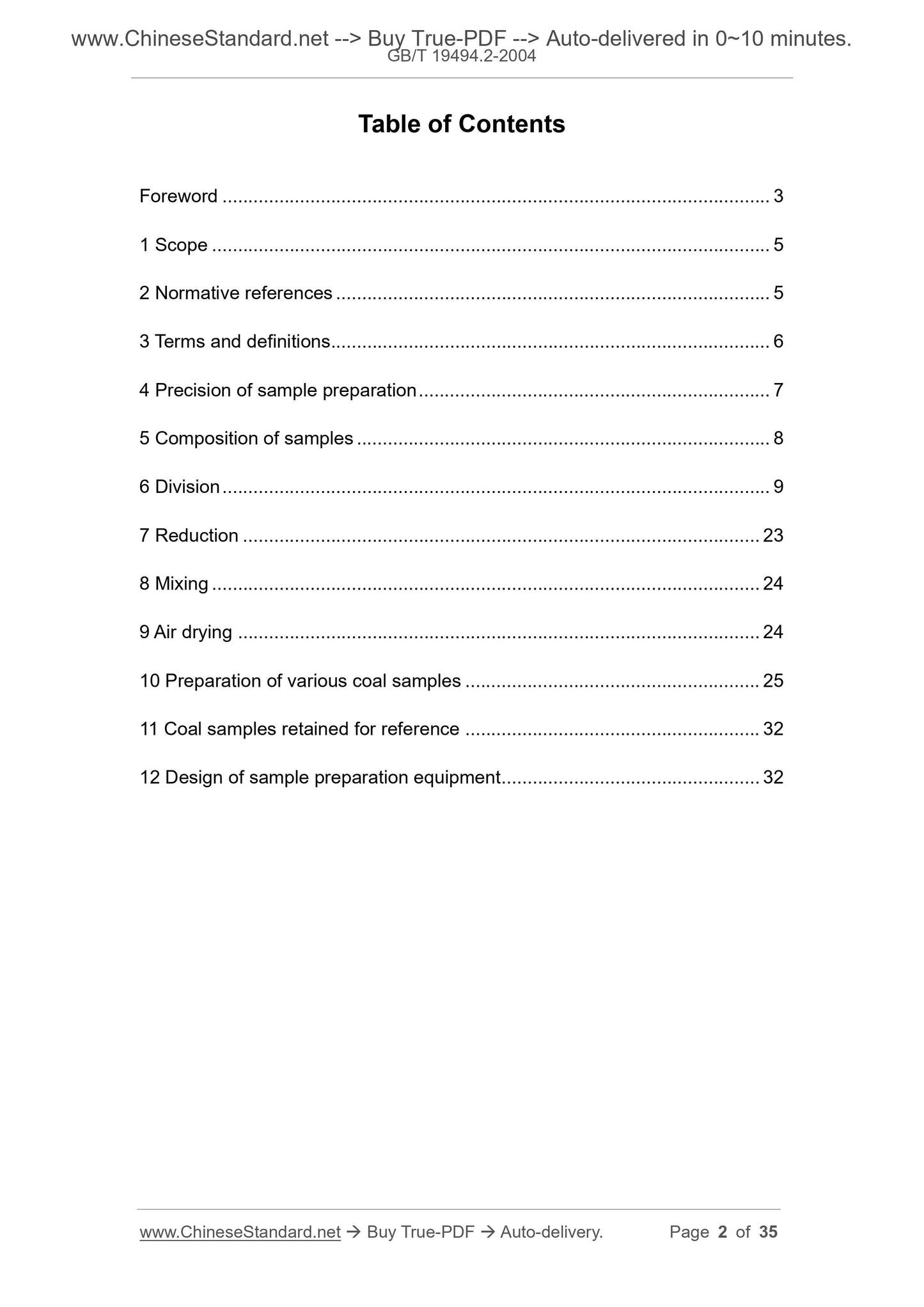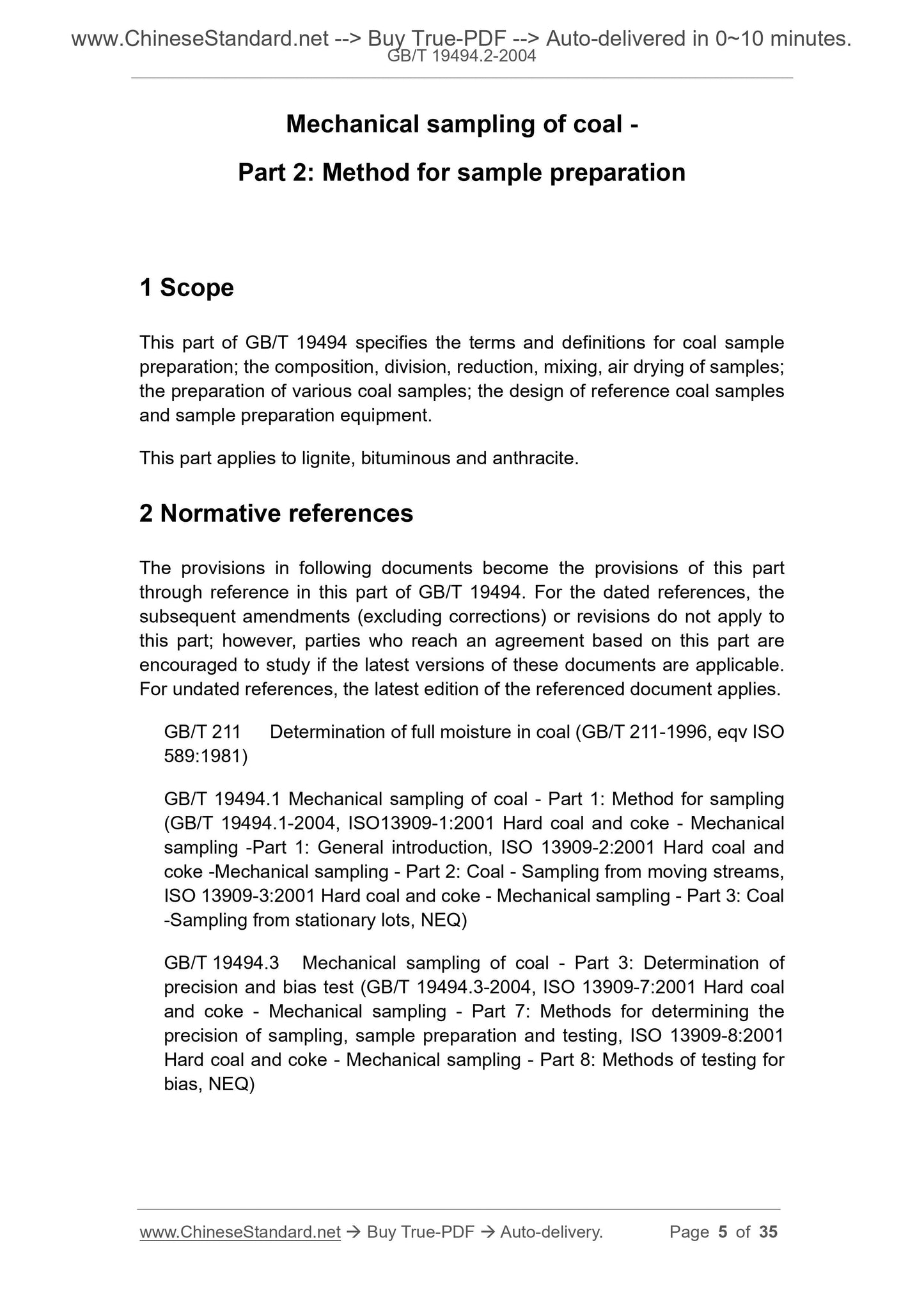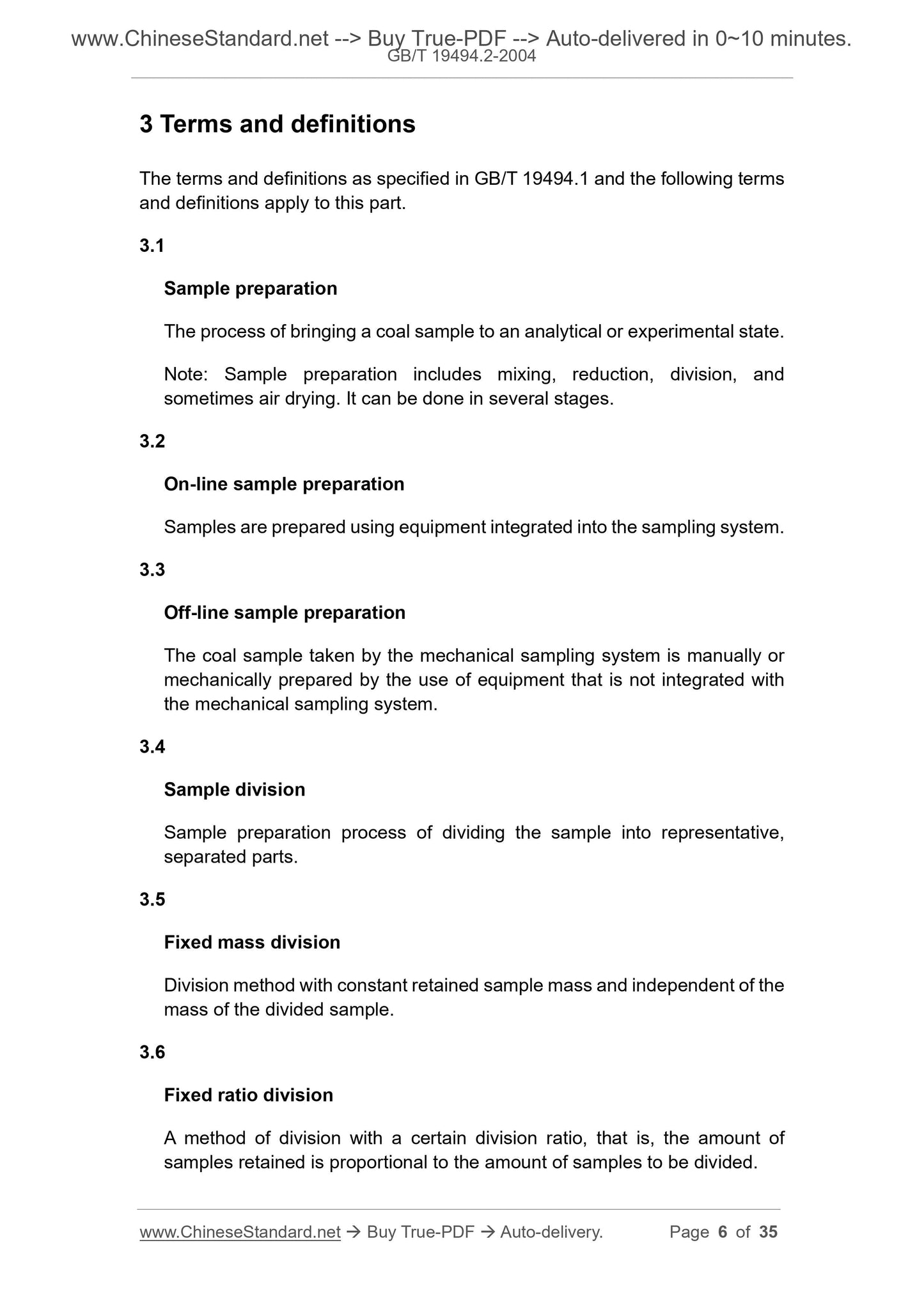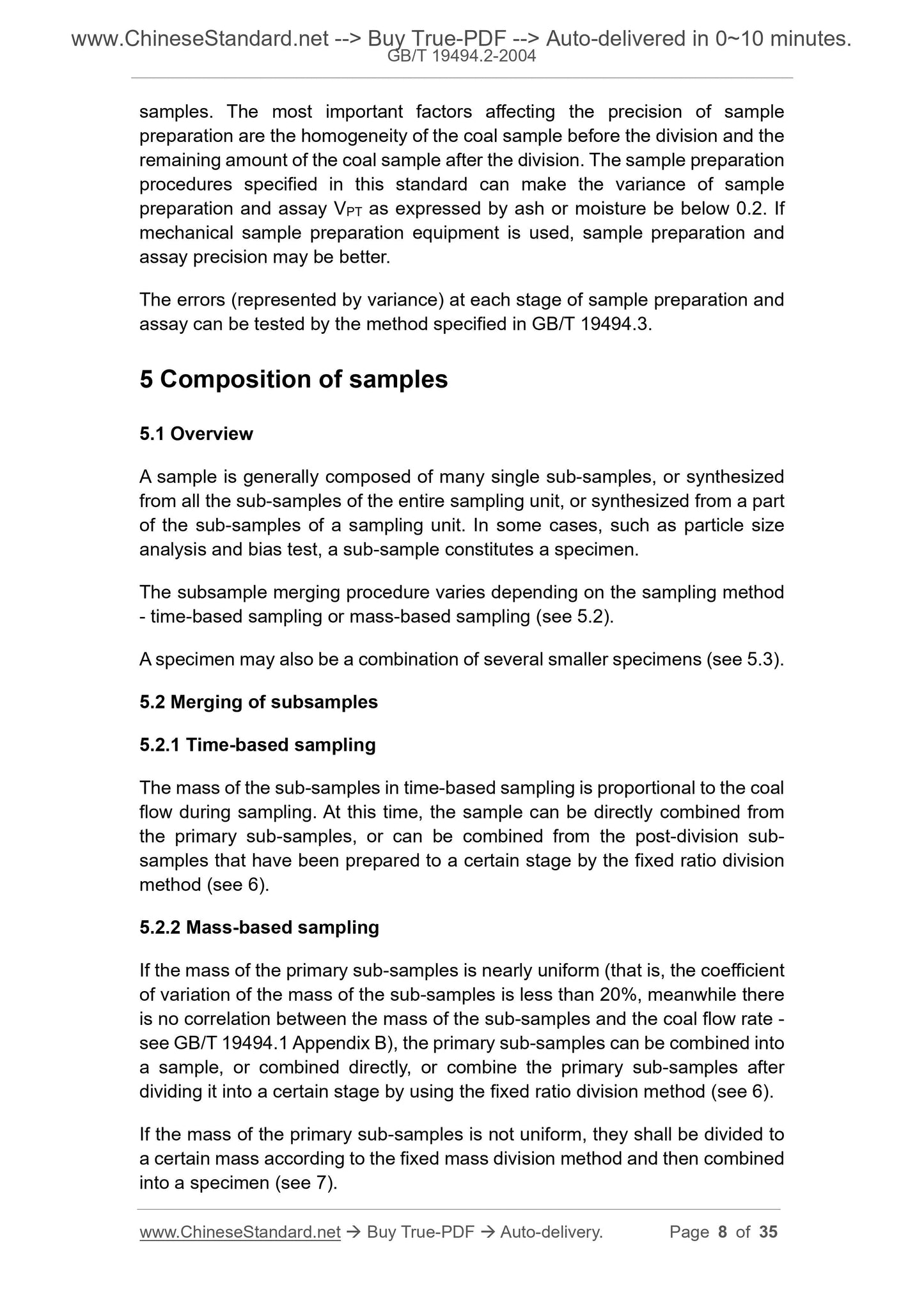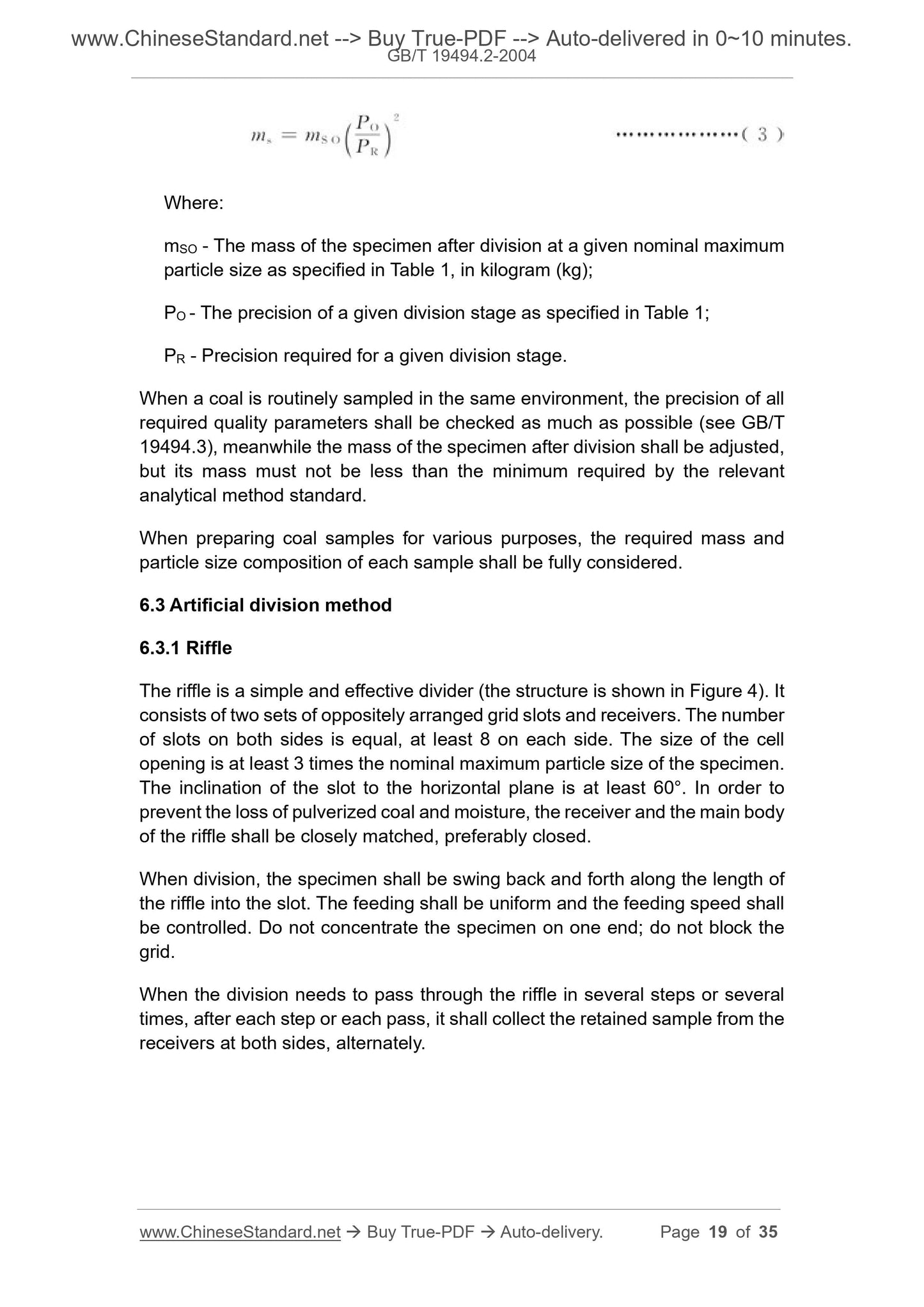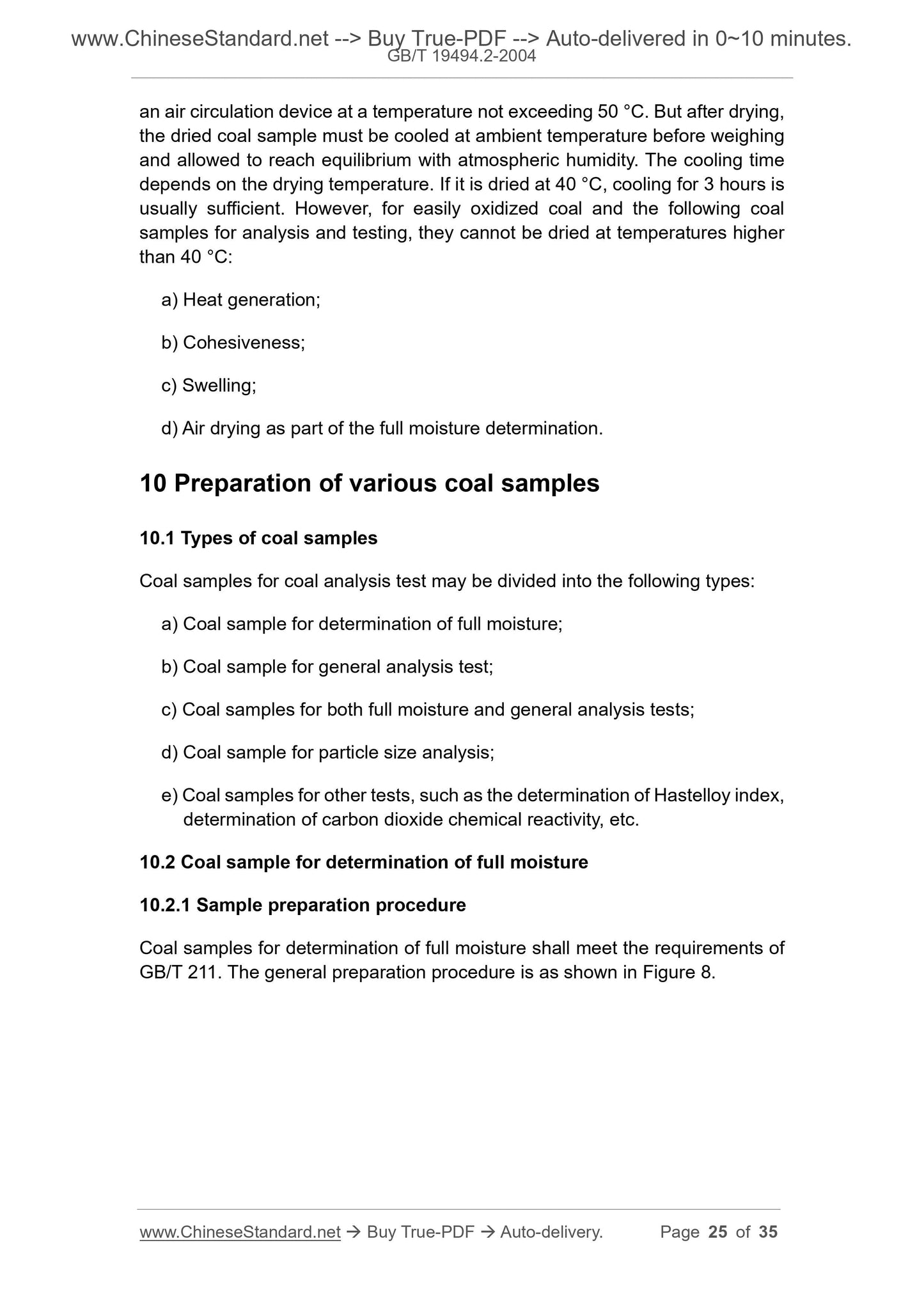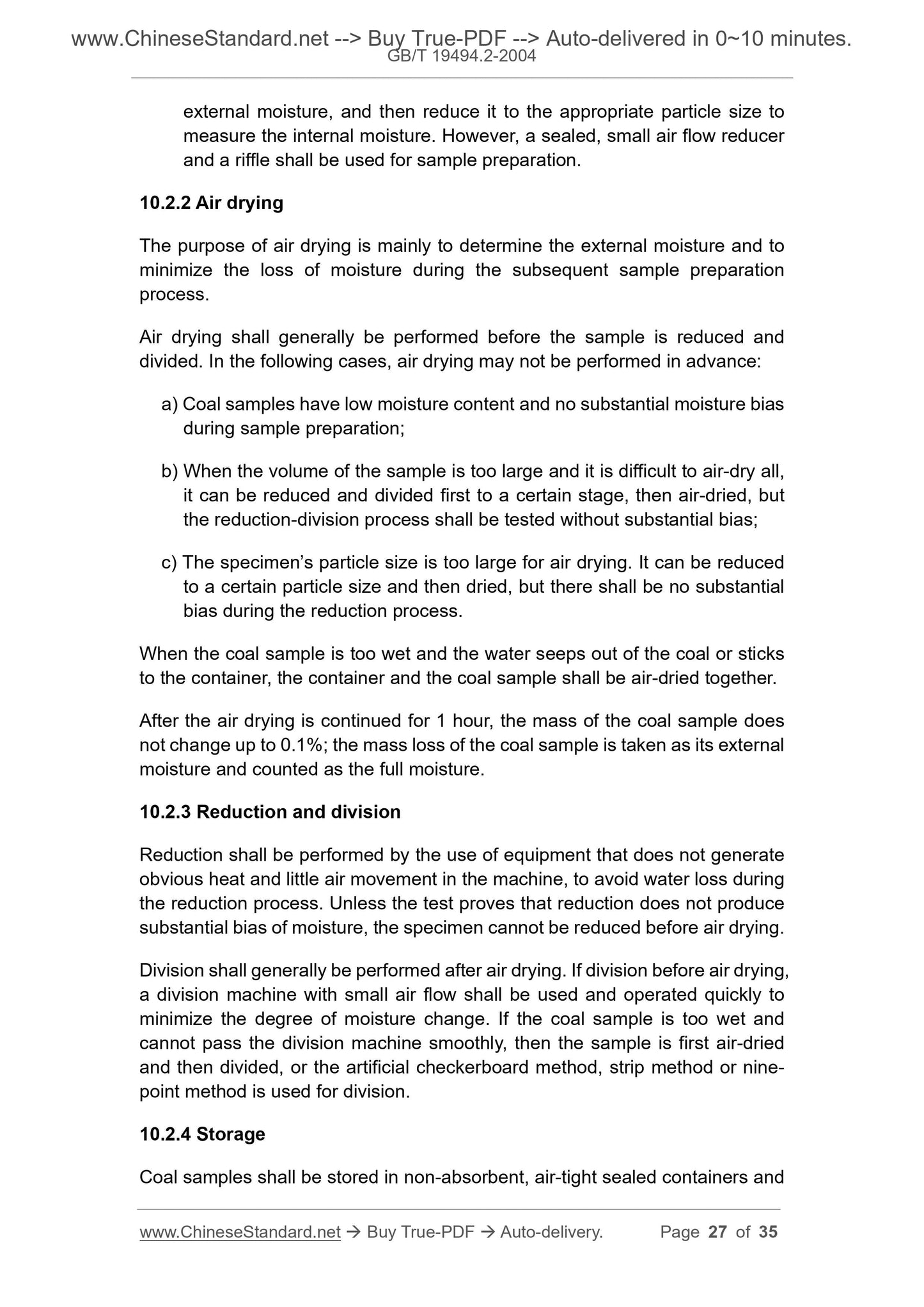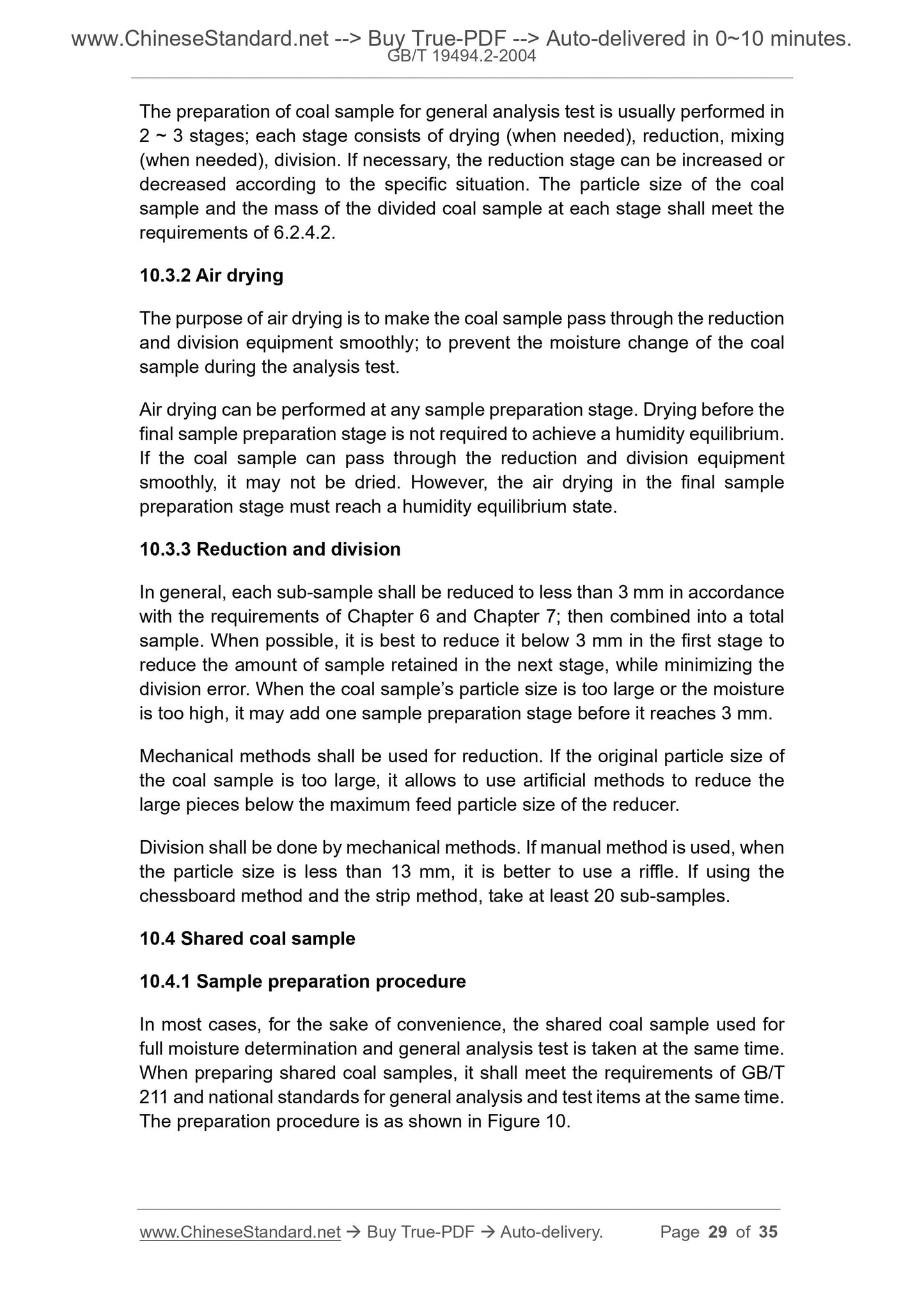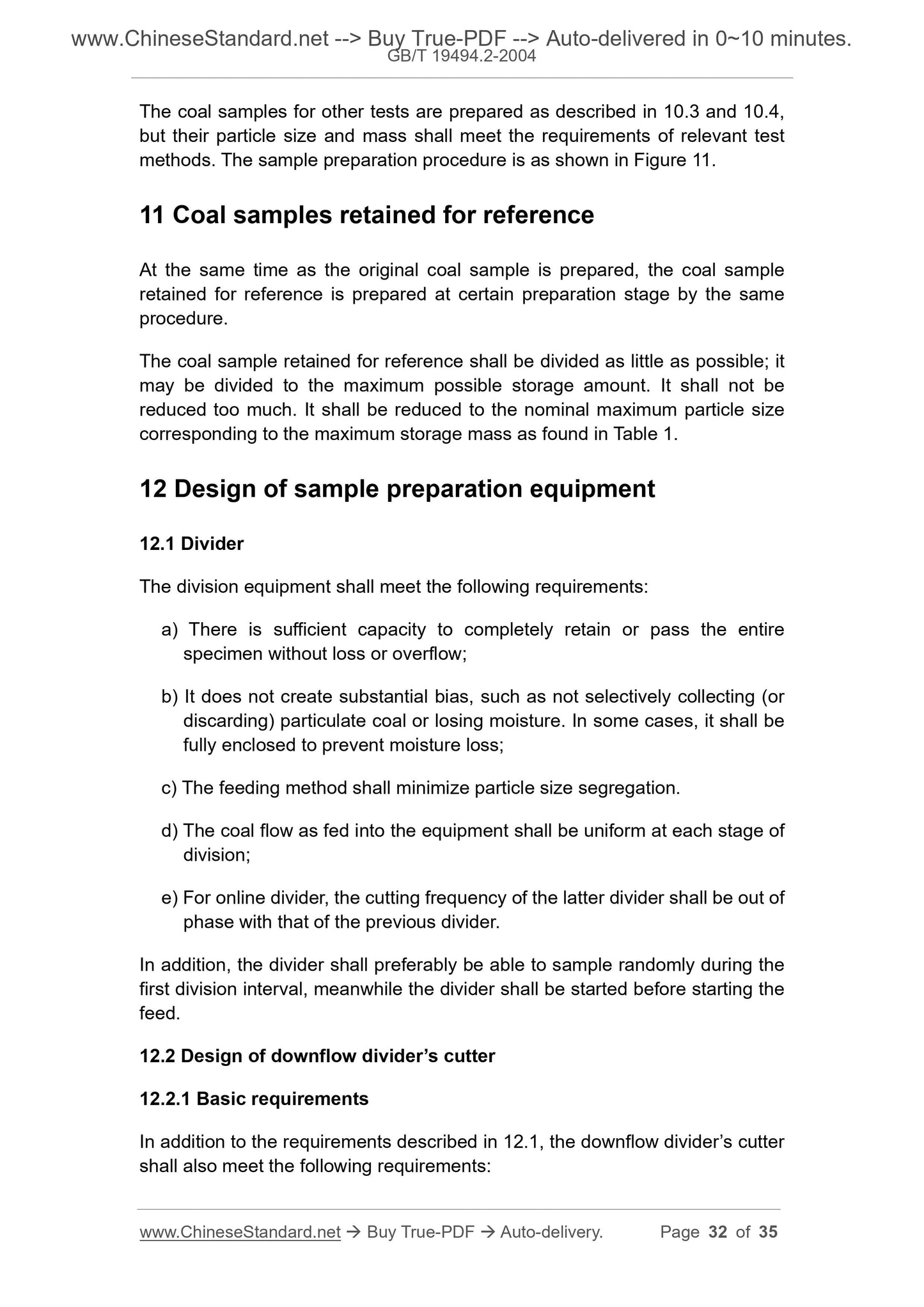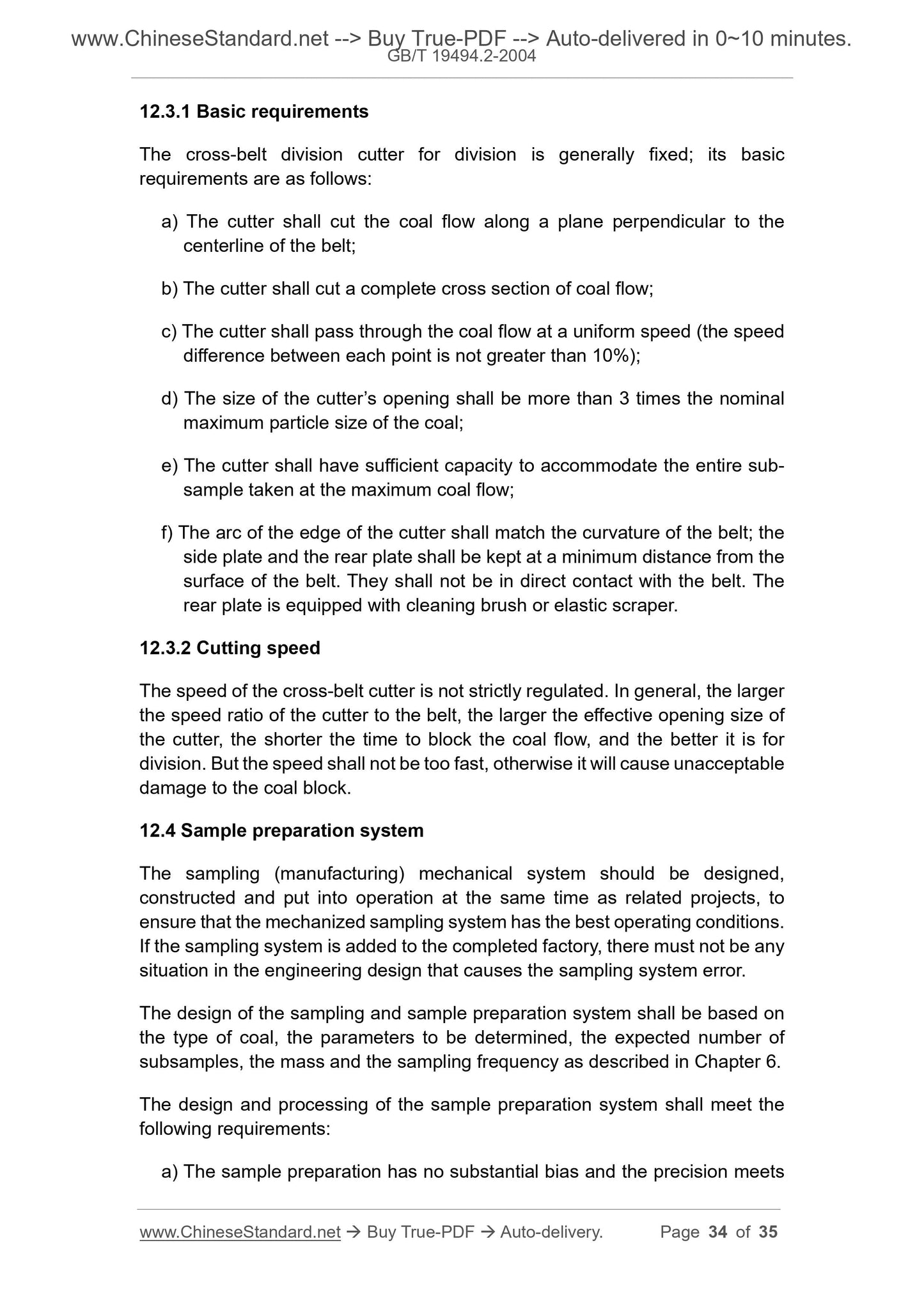1
/
of
11
PayPal, credit cards. Download editable-PDF and invoice in 1 second!
GB/T 19494.2-2004 English PDF (GB/T19494.2-2004)
GB/T 19494.2-2004 English PDF (GB/T19494.2-2004)
Regular price
$145.00
Regular price
Sale price
$145.00
Unit price
/
per
Shipping calculated at checkout.
Couldn't load pickup availability
GB/T 19494.2-2004: Mechanical sampling of coal -- Part 2: Method for sample preparation
Delivery: 9 seconds. Download (and Email) true-PDF + Invoice.Get Quotation: Click GB/T 19494.2-2004 (Self-service in 1-minute)
Newer / historical versions: GB/T 19494.2-2004
Preview True-PDF
Scope
This part of GB/T 19494 specifies the terms and definitions for coal samplepreparation; the composition, division, reduction, mixing, air drying of samples;
the preparation of various coal samples; the design of reference coal samples
and sample preparation equipment.
This part applies to lignite, bituminous and anthracite.
Basic Data
| Standard ID | GB/T 19494.2-2004 (GB/T19494.2-2004) |
| Description (Translated English) | Mechanical sampling of coal. Part 2: Method for sample preparation |
| Sector / Industry | National Standard (Recommended) |
| Classification of Chinese Standard | D21 |
| Classification of International Standard | 73.040 |
| Word Count Estimation | 23,266 |
| Date of Issue | 2004-04-30 |
| Date of Implementation | 2004-10-01 |
| Quoted Standard | GB/T 211; GB/T 19494.1; GB/T 19494.3 |
| Adopted Standard | ISO 13909-1-2001; NEQ; ISO 13909-4-2001; NEQ |
| Regulation (derived from) | Announcement of Newly Approved National Standards No. 5 in 2004 (total 67) |
| Issuing agency(ies) | General Administration of Quality Supervision, Inspection and Quarantine of the People Republic of China, China National Standardization Administration Committee |
| Summary | This standard specifies: coal sample preparation Terminology and definitions, specimens structure, shrinking points, crushing, mixing and air dried, various coal sample Preparation, Cuncha coal samples and sample preparation equipment designs. This standard applies to: lignite, bituminous coal and anthracite. |
Share
